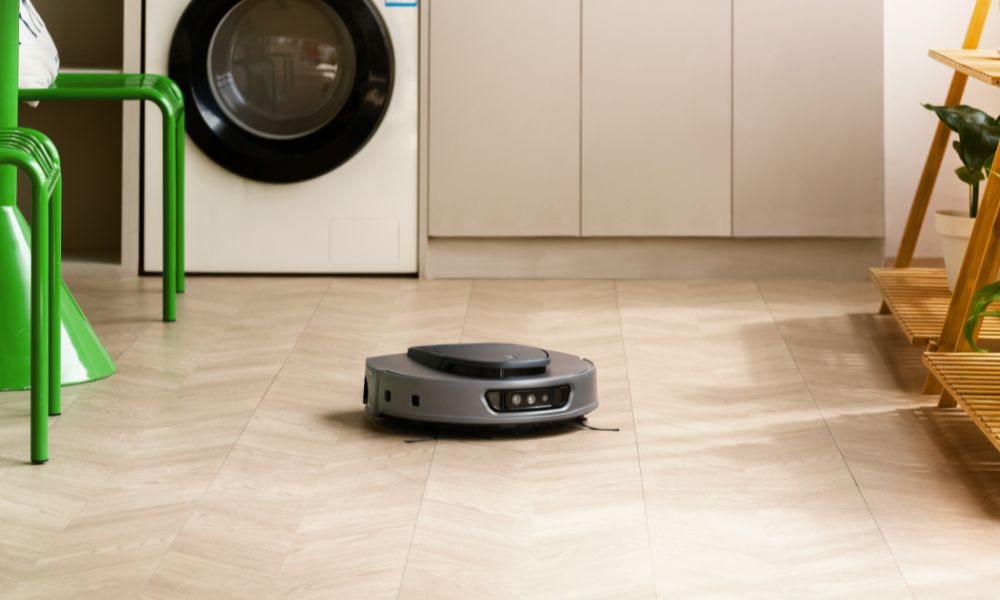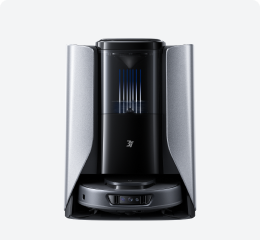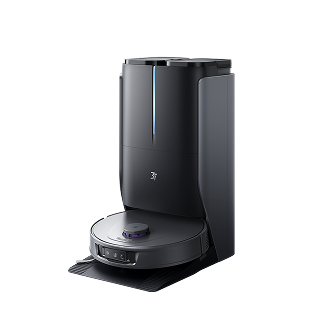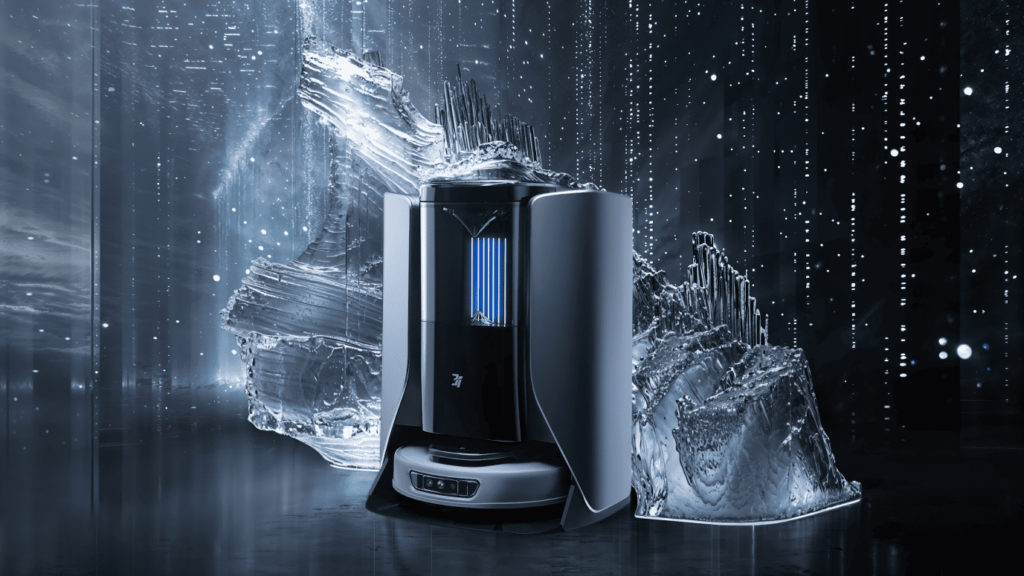Robot vacuums are becoming increasingly popular because they are a convenient and efficient way to keep your floors clean. But when it comes to using them in spaces like bathrooms, with challenges like humidity, moisture, and tight areas, it’s natural to wonder if a sweeping robot is truly up to the task. Here, we take a deep dive into whether it’s safe and practical to use a robot vacuum in the bathroom, what risks to consider, and some practical alternatives.
Is It Safe to Use a Robot Vacuum in the Bathroom?
Using a robot vacuum cleaner in the bathroom is convenient, but there are some risks to consider. Bathrooms have high humidity, slippery surfaces, and standing water, which can damage a sweeping robot that is not designed for such environments. Therefore, you need to make sure your vacuum cleaner parts are suitable for wet areas or have adequate protection against moisture. Check the manufacturer's guide for your model to confirm whether it is suitable for use in the bathroom to avoid any potential dangers or damage to your device.

What Are the Risks of Using a Robot Vacuum in the Bathroom?
Water and Moisture Damage
Robot vacuums are generally not designed to handle wet conditions, and exposure to water can lead to severe issues. Water or high humidity can harm the vacuum cleaner parts such as sensors, batteries, and internal motors, potentially causing malfunctions or complete breakdowns. In the worst cases, water exposure could short-circuit the robot vacuum’s electronics, making it costly or impossible to repair.
Slippery or Wet Surfaces
Bathrooms are prone to becoming slippery, especially with water spills from sinks or showers. Many robot vacuums lack traction control on slick surfaces, and a wet floor could cause the sweeping robot to skid, get stuck, or turn off unexpectedly. Slippery floors also risk further damage to the vacuum and can lead to incomplete cleaning or even scratching on more delicate surfaces.
Bathroom-Specific Debris
Bathrooms often have unique debris types compared to other parts of the home, including hair, dust, and residues from personal care products. Hair, in particular, can be problematic for robot vacuums as it easily tangles around brushes and clogs vacuum cleaner parts, reducing performance. Robot vacuums not specifically designed to handle hair may need frequent maintenance to remove clogs and tangles.
Obstacles and Small Spaces
Bathrooms tend to have more obstacles, such as toilet bases, bathmats, and tight spaces, which can complicate navigation. These challenges increase the likelihood of the sweeping robot getting stuck, needing manual intervention, or missing areas that need cleaning. The confined space of most bathrooms also reduces the vacuum’s ability to move around freely, impacting the effectiveness of its cleaning path.
How to Use a Robot Vacuum in the Bathroom?
While bathrooms present some unique challenges for robot vacuums, there are steps you can take to use them more effectively and safely in this space.
Dry the Floor Completely Before Cleaning
Make sure your bathroom floor is completely dry before setting your sweeping robot loose. After a bath or shower, open a window or run a fan to air out the space and reduce humidity. This will protect your device and its vacuum cleaner parts from water damage, ensuring it has a firm grip while navigating.
Clear Obstacles and Remove Rugs
Before you start the vacuum, clear away bath mats, rugs, and any small objects that could get caught up in your sweeping robot. This step will help it move freely and cleanly without getting snagged or stalled, allowing it to do its job efficiently.
Schedule Cleaning for Times When the Bathroom Is Unused
Plan to run your sweeping robot during times when the bathroom is not in use, like overnight or while you’re at work. This scheduling ensures the vacuum won’t be interrupted and can clean the entire area thoroughly.
Opt for Models with Anti-Tangle Features
If hair in the bathroom is a concern, choose a robot vacuum with anti-tangle features to prevent clogs and maintain efficient operation. Look for models with specialized brushes or self-cleaning systems designed to handle hair seamlessly.
Choose a Hybrid Vacuum-Mop for Wet Environments
Consider a hybrid vacuum mop if you’re aiming for a spotless bathroom. These devices can handle minor dampness and offer the dual action of vacuuming and mopping, ensuring a deeper clean. However, remember to keep the usage within limits to avoid water-related damage.

Maintenance and Troubleshooting
To maintain your sweeping robot and keep it running smoothly, follow these steps:
1. Regular Cleaning: After each use, empty the dustbin and regularly check and clean the brushes, wheels, and other vacuum cleaner parts to prevent clogs and maintain strong suction.
2. Battery Care: Charge your self empty robot vacuum according to the manufacturer’s instructions, avoid overcharging, and occasionally fully discharge the battery to keep it healthy.
3. Software Updates: Keep your sweeping robot running smoothly by regularly updating its software. These updates can fix bugs, improve functionality, and sometimes enhance battery life.
4. Troubleshooting Common Issues: If you encounter issues like sensor malfunctions or jammed wheels, refer to your user manual. Often, a simple reset or removing obstructions can quickly resolve problems.
What Are Some Alternatives for Cleaning the Bathroom?
If a sweeping robot doesn’t seem like the best fit for your bathroom, there are several alternatives that may be better suited:
1. Steam Cleaners: Use a steam cleaner to deeply sanitize your bathroom. The steam heat will effectively remove grime and mold without harsh chemicals.
2. Handheld Vacuums: A handheld vacuum can quickly clean up hair and debris, reaching into tight spots and corners to make your cleaning routine more efficient.
3. Microfiber Mops: Choose a microfiber mop to capture dirt and dry the floor quickly. It uses less water, reducing slip hazards while thoroughly cleaning your bathroom floor.
4. Scrub Brushes and Cleaning Solutions: Apply elbow grease with a scrub brush and strong cleaner to tackle tough stains and buildup, ensuring a thorough clean.
5. Disposable Wipes: Swipe surfaces with disposable wipes for quick disinfection, perfect for keeping areas like faucet handles and door knobs germ-free between deeper cleans.
Conclusion
Using a sweeping robot in the bathroom is convenient but requires caution to avoid risks like water damage and navigation issues. In addition, choose a vacuum suitable for such conditions and perform regular maintenance to extend its life. If a robot vacuum isn’t ideal, consider alternatives like steam cleaners or handheld vacuums to effectively clean the bathroom.







